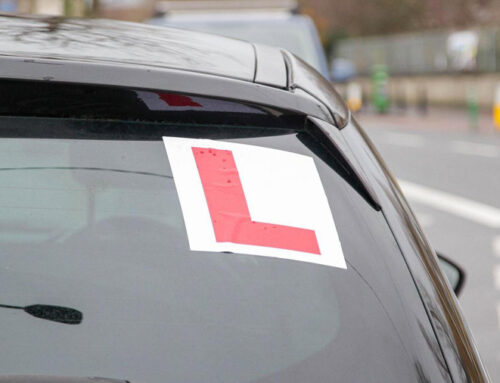Steer Past Fear: Effective Strategies to Alleviate Driver Anxiety
Struggling with steering the car without a surge of anxiety? Driver anxiety is not just common—it’s treatable. This article bypasses the fluff to provide immediate, actionable advice for those affected by the worry and dread of driving. Prepare to identify the causes of your anxiety, understand its symptoms, and apply hands-on strategies to conquer driving fear and reclaim the joy of the journey.
Key Takeaways
- Factors causing driving anxiety include past trauma, mental health conditions, unfamiliar driving situations, physical impairments like vision problems, and the fear of losing control.
- Strategies to alleviate driving anxiety comprise professional guidance, refresher courses, relaxation and mindfulness techniques, gradual exposure, and seeking support from loved ones or therapists.
- It’s essential to acknowledge driving anxiety as a legitimate concern and to remember that overcoming it is a process that involves patience, practice, and support.
Understanding Driver Anxiety
Having a sense of unease in the driver’s seat is more common than you might think. In fact, many drivers experience anxiety when preparing to drive, or even when just thinking about driving. But what does driving anxiety look like? Well, it’s not just about feeling anxious on the road. It can significantly disrupt daily routines and potentially lead to long-term mental health problems.
Driving anxiety can take various forms. Some people may experience:
- an intense and irrational fear of driving
- anxiety triggered by a traumatic driving experience
- situational driving anxiety, where certain driving situations trigger their anxiety
Regardless of the form it takes, it’s important to understand that driving anxiety is real and prevalent among many anxious drivers.
So how can we recognise and overcome driving anxiety? Let’s delve deeper.
Common Causes of Driving Anxiety
Just as there are many forms of driving anxiety, there are also numerous potential causes. Understanding these can help in managing the condition. A common cause of driving anxiety is past trauma, like a road accident or a negative experience such as driving through severe weather. These experiences can leave a lasting impact and contribute to the development of driving anxiety.
Mental health conditions like Generalised Anxiety Disorder or Panic Disorder can also lead to driving anxiety. These conditions can affect concentration, decision-making, and confidence in driving abilities, thus intensifying the anxiety. Even without a direct experience, fear of dying in a car accident and anticipation of potential dangers can lead to distrust in one’s own or others’ driving abilities and exacerbate anxiety.
Another common trigger for driving anxiety is driving alone in unfamiliar areas. The fear of getting lost, vehicle breakdowns, or running out of fuel can be daunting, especially when compounded by concerns over phone signal availability. A heightened sense of vulnerability can also stem from the fear of not being in control while driving, as well as claustrophobia or the fear of being trapped, particularly in stationary traffic. These most common driving fears can lead to a driving phobia in some individuals.
Physical factors, such as vision problems, can contribute to anxiety by making it more difficult to see obstacles and navigate the road safely. Recognising these common causes of driving anxiety is the first step toward addressing the issue:
- Vision problems
- Hearing problems
- Mobility issues
- Chronic pain
- Fatigue
By addressing these physical factors and considering virtual reality exposure therapy, you can help alleviate driving anxiety and improve your overall driving experience.
Recognising Symptoms of Driving Anxiety
Driving anxiety manifests itself in various ways, and recognising the symptoms is key to managing the condition. Some symptoms of driving anxiety can include:
- Intense fear
- Sweating
- Rapid heartbeat
- Nausea
- Dry mouth
- Shortness of breath
These symptoms can sometimes mirror panic attack experiences.
Physical symptoms can also be an indicator of driving anxiety. This can include sweaty palms, which can make it difficult to steer, as well as dizziness or vertigo due to the anxiety. Emotionally, driving anxiety can manifest as excessive worry about potential road mishaps, irritability, and significant mood swings affecting daily life.
One of the most lasting impacts of driving anxiety is a constant feeling of dread or unease about driving, which can undermine an individual’s overall confidence behind the wheel. If you or someone you know is experiencing these symptoms, it’s important to seek help and start on the path to overcoming driving anxiety.
Tips for Overcoming Driving Anxiety
Overcoming driving anxiety may seem daunting but remember, it’s a journey, not a destination. There are several strategies that can help manage this condition, including:
- Seeking professional guidance
- Taking refresher courses
- Practicing relaxation techniques
- Engaging in mindfulness exercises
Let’s break these down and explore each one.
Professional Guidance and Refresher Courses
One effective approach to tackling driving anxiety is seeking professional guidance. A driving instructor can offer practical advice and reassurance, helping you to address your fears and enhance your driving skills. In some regions, like England, Scotland, and Wales, learners can even gain practical driving experience on motorways through lessons with an approved instructor.
Professional driving instructors can provide individualised support that targets the specific concerns and anxieties of each learner. By creating a safe and supportive learning environment, these instructors can help alleviate panic attacks and create a positive driving experience.
Remember, seeking help from a mental health professional is not a sign of weakness. On the contrary, it shows your determination to overcome driving anxiety and regain control behind the wheel, preventing you from losing control. It’s about taking one step at a time, at your own pace, and celebrating every small victory along the way.
Relaxation Techniques and Mindfulness
Another effective strategy to manage driving anxiety is through relaxation techniques and mindfulness. Deep breathing exercises, for instance, can help you focus on the present moment and regulate your physiological responses to stress. Similarly, repeating positive affirmations such as ‘I am safe’ or ‘I am in control’ can help build confidence while behind the wheel.
Maintaining a healthy lifestyle, with regular physical activity and relaxation techniques, can also contribute to lower overall anxiety levels and better management of driving anxiety. Before you start driving, you could also create a plan to increase your confidence and provide strategies to tackle fear-related incidents while on the road.
It’s also important to avoid paranoid thoughts of failing the driving test or being in accidents. These thoughts only serve to fuel anxiety. Instead, focus on the road ahead, take deep breaths, and keep reminding yourself that you are in control.
Gradual Exposure and Building Confidence
Tackling driving anxiety isn’t about diving headfirst into the deep end. It’s about gradual exposure, starting small and slowly building up confidence. As your confidence grows, you can incrementally tackle more challenging driving scenarios, helping you to progressively manage your driving anxiety.
Having a supportive companion during the early stages of your driving journey can be immensely helpful. Their presence can offer comfort and help mitigate feelings of panic or distress. Remember, it’s important to face your driving fears directly and consistently to effectively recalibrate your nervous system.
Gradual exposure to driving is like learning to swim, and can be seen as a form of exposure therapy. You start in the shallow end, slowly venture deeper as your confidence grows, and before you know it, you’re swimming in the deep end with ease. You’ve got this!
Supporting Loved Ones with Driving Anxiety
If you have a loved one dealing with driving anxiety, your support can make a world of difference. Here are some ways you can help:
- Show empathy and understanding, without judgment
- Be patient and offer reassurance
- Offer to accompany them on drives, if they feel comfortable
- Encourage them to seek professional help, such as therapy or counseling
- Help them practice relaxation techniques, such as deep breathing or visualisation
- Avoid pressuring or criticising them
- Just a little patience and understanding can go a long way in helping them feel less alone.
Positive reinforcement can also help alleviate their fear of driving. By boosting their confidence and reducing the perceived risk in their minds, you’re helping them overcome their anxiety. Joining them during their early driving attempts can provide a calm and reassuring presence, making them feel less isolated and more confident in overcoming their anxiety.
In some cases, it may be necessary to suggest professional help when their driving anxiety impedes their daily functioning or causes them intense distress. You can also guide them through manageable driving experiences, like:
- short trips during less busy times
- driving in familiar areas
- practicing relaxation techniques before and during driving
- using visualisation exercises to imagine successful and calm driving experiences
These steps can help them gradually face their fears and build up their driving confidence.
Navigating Through Driving Anxiety
In addition to the strategies we’ve discussed, there are other techniques that can help manage driving anxiety. Visualisation techniques, such as picturing oneself driving calmly and confidently, can prepare individuals mentally and emotionally before they begin driving. Positive affirmations can also boost confidence and help maintain composure while driving.
Seeking the aid of a therapist or counselor with expertise in anxiety disorders can provide valuable tools and insights for managing driving anxiety. Cognitive Behavioral Therapy (CBT) is recognised as an effective method to alter negative thought patterns and perceptions related to driving. Regular exercise can also alleviate stress and anxiety, potentially improving the driving experience for those with driving anxiety.
The road to overcoming driving anxiety may be bumpy, but remember, every journey starts with a single step. You have the power to conquer your fears and regain control of your driving experience, holding the steering wheel with confidence. You’re in the driver’s seat, after all!
Summary
Driving anxiety is a common issue that can significantly impact one’s life. However, with understanding, patience, and the right strategies, it is entirely manageable. From seeking professional guidance to practicing relaxation techniques, there are numerous ways to tackle this issue. Remember, it’s about gradual exposure and building up confidence.
Don’t let driving anxiety keep you from enjoying the freedom and convenience that comes with being behind the wheel. You’re not alone in this journey, and there’s plenty of help available. So, buckle up, take a deep breath, and remember – you’ve got this!
Frequently Asked Questions
What is driving anxiety?
Driving anxiety is a common issue that can significantly impact daily life and mental health.
What are some common causes of driving anxiety?
Driving anxiety can be caused by past traumas such as road accidents, mental health conditions like Generalised Anxiety Disorder, fear of accidents, and physical factors like vision problems. These factors can contribute to feelings of anxiety while driving.
How can I recognise symptoms of driving anxiety?
If you experience panic attacks, sweaty palms, dizziness, excessive worry, irritability, or a constant feeling of dread about driving, these could be symptoms of driving anxiety. It’s important to seek support and professional help if you are experiencing these symptoms.
What are some effective strategies for overcoming driving anxiety?
To overcome driving anxiety, consider seeking professional guidance, taking refresher driving courses, practicing relaxation techniques and mindfulness, and gradually exposing yourself to driving to build confidence. These strategies can help you manage your anxiety and feel more comfortable behind the wheel.
How can I support a loved one with driving anxiety?
You can support a loved one with driving anxiety by showing empathy, providing encouragement, and accompanying them during early driving attempts. Suggest professional help when necessary.








